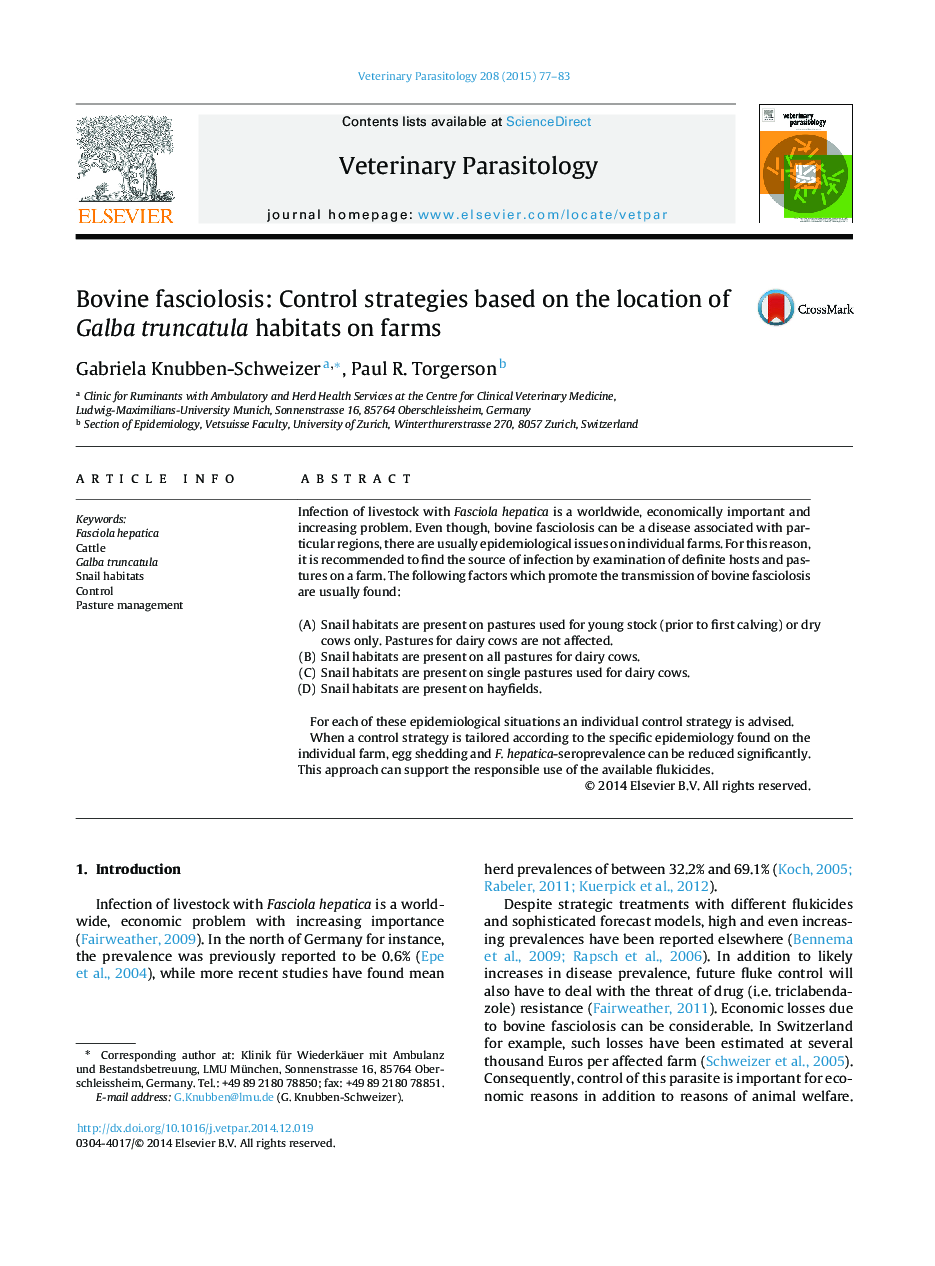| Article ID | Journal | Published Year | Pages | File Type |
|---|---|---|---|---|
| 5802701 | Veterinary Parasitology | 2015 | 7 Pages |
Infection of livestock with Fasciola hepatica is a worldwide, economically important and increasing problem. Even though, bovine fasciolosis can be a disease associated with particular regions, there are usually epidemiological issues on individual farms. For this reason, it is recommended to find the source of infection by examination of definite hosts and pastures on a farm. The following factors which promote the transmission of bovine fasciolosis are usually found:(A)Snail habitats are present on pastures used for young stock (prior to first calving) or dry cows only. Pastures for dairy cows are not affected.(B)Snail habitats are present on all pastures for dairy cows.(C)Snail habitats are present on single pastures used for dairy cows.(D)Snail habitats are present on hayfields.For each of these epidemiological situations an individual control strategy is advised.When a control strategy is tailored according to the specific epidemiology found on the individual farm, egg shedding and F. hepatica-seroprevalence can be reduced significantly. This approach can support the responsible use of the available flukicides.
